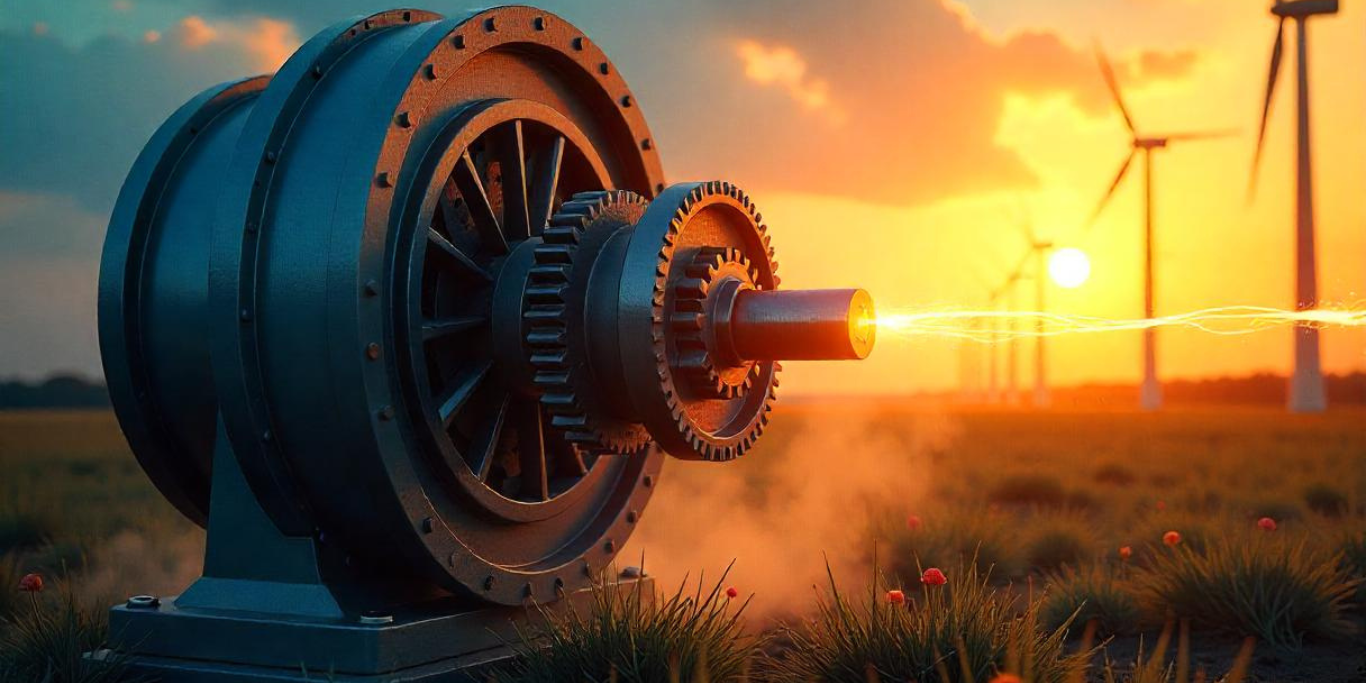How Engines Turn Energy into Electricity: The Magic Behind the Power
In today’s world, the engine that converts energy into electricity plays a crucial role in powering our homes, industries, and even vehicles. The ability to transform various forms of energy into electrical energy is fundamental to modern life. But how does this process work? In this article, we’ll dive deep into how these engines work, the science behind them, and provide practical examples of their application.
What is an Engine That Converts Energy into Electricity?
The engine that converts energy into electricity is typically a mechanical device known as a generator. Generators work by transforming mechanical energy into electrical energy, which is then used to power devices ranging from light bulbs to entire cities. These engines operate on the principle of electromagnetic induction, where mechanical energy from sources like wind, water, or combustion is used to move a magnet through a coil, inducing an electric current.
Generators can be found in power plants, renewable energy systems, and even in your portable backup power generator at home. They are responsible for the electricity we rely on daily.
Energy Stored Chemically for Conversion into Electricity
One of the most fascinating methods of converting energy into electricity involves energy stored chemically for conversion into electricity. This process occurs in devices such as batteries, where chemical reactions take place to release stored energy. The energy released is then converted into electrical energy that can power devices like smartphones, laptops, or electric vehicles.
For example, lithium-ion batteries, widely used in electric cars and renewable energy storage, store chemical energy that can later be converted into electrical energy to power vehicles or homes.
The Equation for Electric Potential Energy
To understand the relationship between electrical energy and the engine that converts energy into electricity, it’s essential to know how electric potential energy works. The equation for electric potential energy is given by:
E=Q×V
Where:
- E is the electric potential energy (in joules),
- Q is the charge (in coulombs),
- V is the electric potential (in volts).
This formula explains how the amount of energy in a system can be quantified based on the charge and potential difference. The greater the voltage, the more electrical energy is available to power devices, making it crucial for the functioning of engines that convert energy into electricity.
Examples of Electrical Energy in Action
Understanding how the engine that converts energy into electricity works is easier when you look at examples from everyday life. Here are a few common uses:
- Wind turbines: Wind energy is converted into mechanical energy that turns the blades of the turbine. The turbine is connected to a generator, where the mechanical energy is then converted into electricity.
- Hydroelectric dams: Water flowing through a dam turns turbines, which then drive generators to produce electrical energy.
- Solar power systems: Solar panels convert sunlight into electrical energy, but in some cases, solar thermal power plants use heat to drive steam engines that convert mechanical energy into electricity.
Each of these systems demonstrates how an engine that converts energy into electricity is crucial to providing the power we need in the modern world.
Learn More About Electrical Energy and Renewable Sources!
If you found the concept of how energy is converted into electricity fascinating, check out our previous article, Understanding Electricity and Electrical Energy: What You Need to Know. In that post, we dive deeper into the broader concepts of electricity, including its generation, its environmental impact, and practical ways to reduce energy consumption.
Why the Equation for Electric Potential Energy Matters
The equation for electric potential energy is essential in understanding how much energy is available in an electric field. This concept is directly linked to how engines and generators work. By understanding electric potential energy, engineers can design more efficient engines that convert energy into electricity, reducing energy waste and increasing the efficiency of electrical systems.
Explore How Electrical Energy Helps Reduce Costs!
Want to learn more about how to better manage electrical energy costs? Check out our article on How to Calculate Electrical Energy Cost, where we break down the factors that impact energy costs and give tips on how to optimize your energy consumption, saving money and reducing environmental impact.
Conclusion: Powering Our World with Efficient Engines
The engine that converts energy into electricity is a cornerstone of modern energy systems. From wind turbines to nuclear plants, these engines make it possible to generate and distribute electricity efficiently. Whether through energy stored chemically for conversion into electricity, like in batteries, or through more traditional methods, understanding these processes is key to reducing energy waste and improving energy efficiency.
As technology advances, we will continue to see new and innovative ways that energy is converted into electricity, helping us move towards a more sustainable and energy-efficient future.
Stay informed about how the engine that converts energy into electricity works by visiting our blog, where we explore key concepts, practical examples, and innovative solutions for efficient energy conversion!
For expert advice on energy systems and efficient electricity generation, contact us today!










